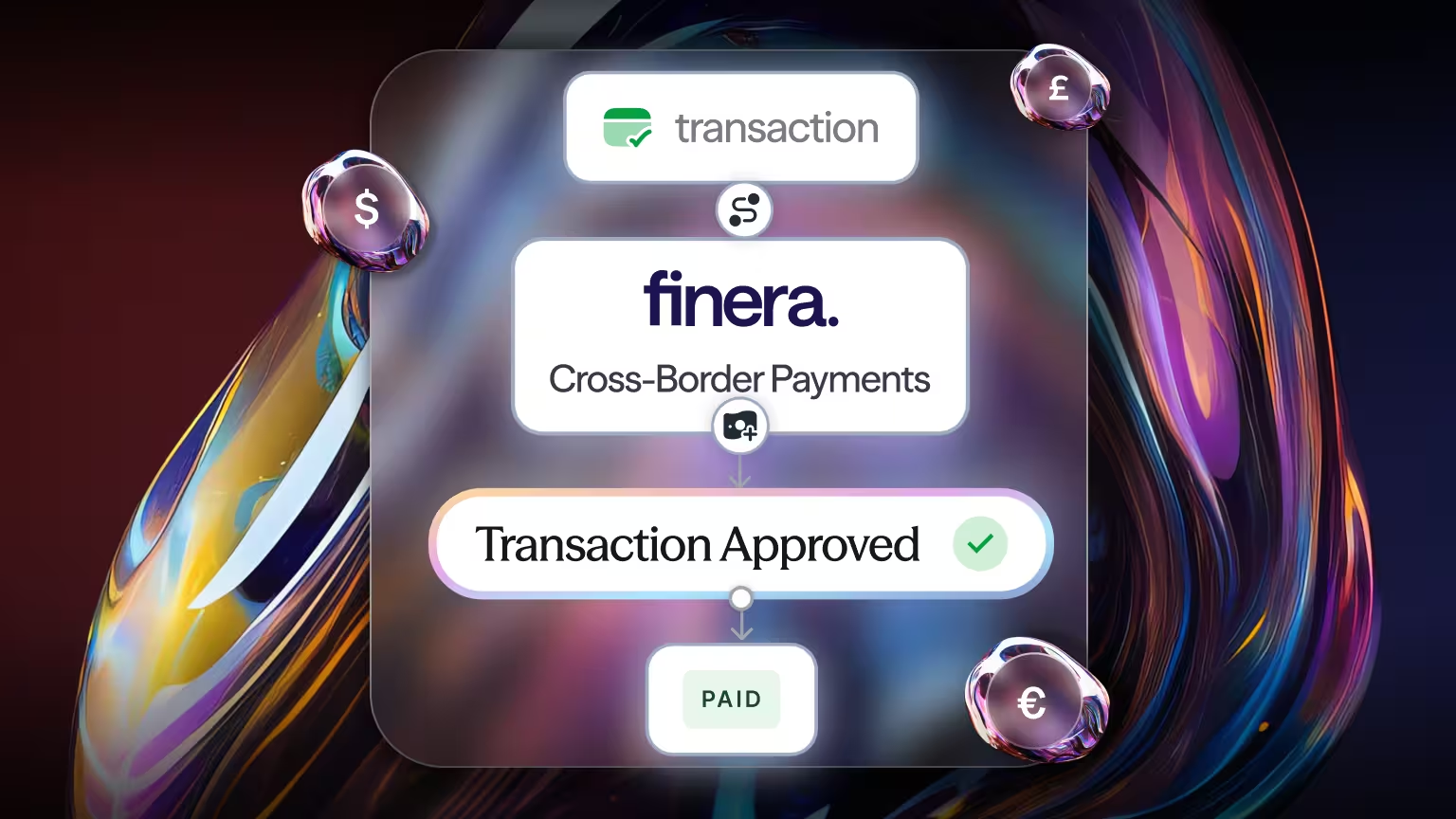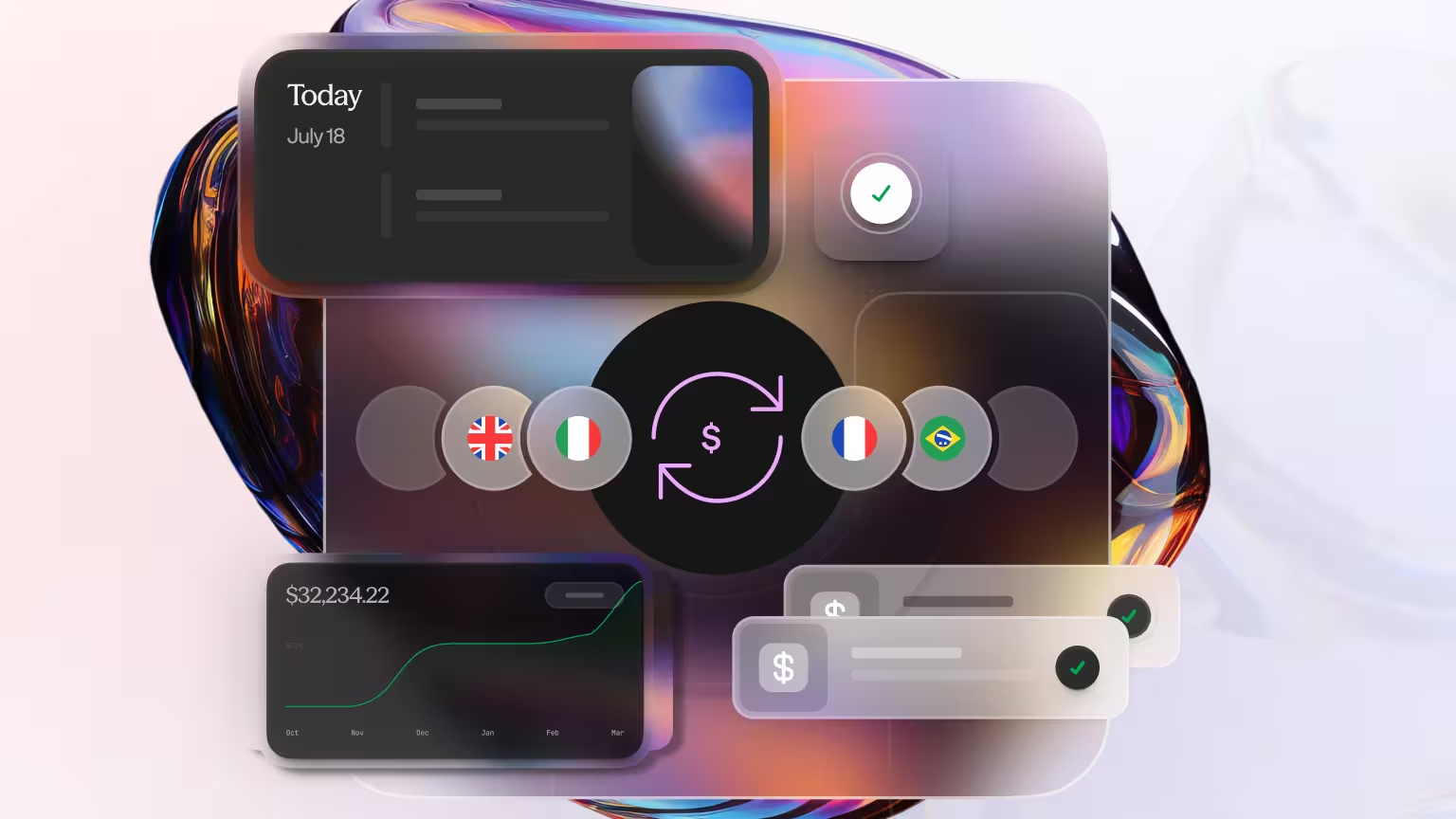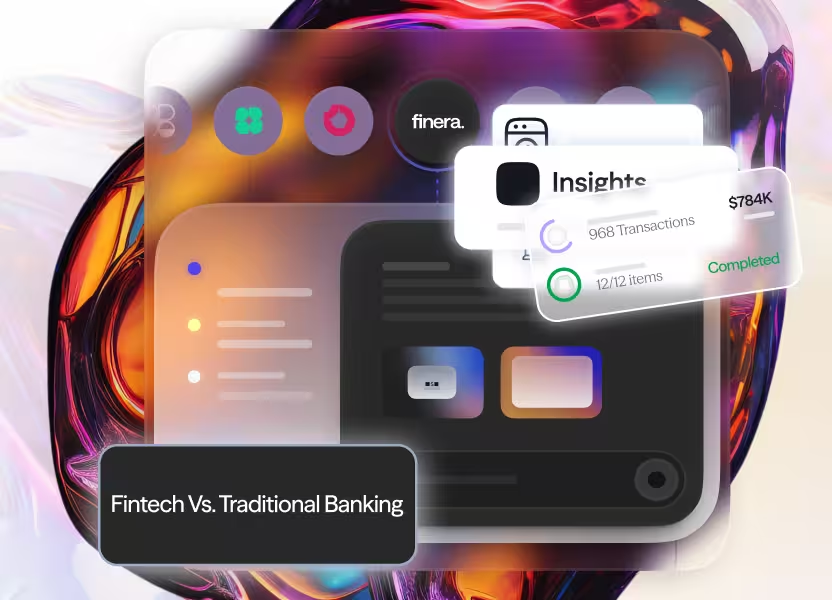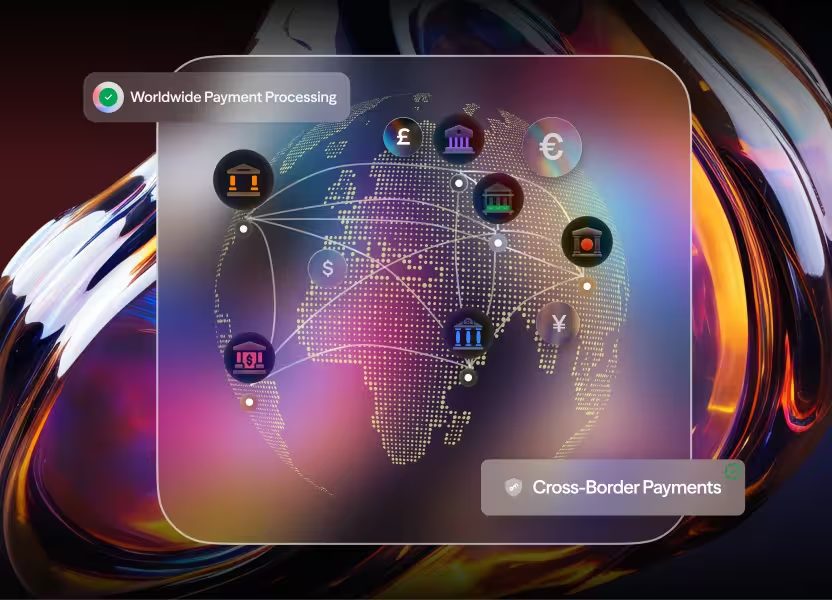The Complete Guide to Choosing the Best Payment Provider for Cross-Border Transactions
Scaling globally? This guide helps you pick the best provider for cross-border transactions.

Global business demands global payments, but choosing the right partner to support cross-border transactions can be overwhelming. Between currency conversion, regional compliance and payment approval challenges, one thing is clear:
Not all providers are built for international growth.
If you are scaling across borders, your payment setup should help (not hinder) your performance.
As you read on, you will learn about the most important features to consider, the key questions to ask and why finera. might be the right fit if you are looking for a smarter, more scalable approach to your payment journey.
What Is a Cross-Border Payment Provider?
A cross-border payment provider enables businesses to accept payments from customers in other countries. Unlike domestic providers, these platforms support multicurrency support, regional acquiring, integrated payment systems and compliance with international regulations.
They are more than just a technical layer.
The right provider can:
- Reduce friction at checkout
- Lower processing and interchange fees
- Improve approval rates in global markets
- Offer alternative payment methods aligned with local preferences
In short, they make sure you get paid no matter where your customer is.
Cross-border payments have grown increasingly sophisticated. According to the Bank of England, legacy infrastructure, currency volatility and local clearing networks have all contributed to fragmented systems. Modern providers must bridge these inefficiencies while maintaining a user-first experience.
Key Features to Look For in a Cross-Border Payment Provider
1. Multi-Currency Support
When expanding internationally, offering customers the ability to pay in their currency builds trust. It also removes confusion around exchange rates and improves conversion.
Look for a provider that:
- Supports a wide range of currencies
- Allows real-time foreign exchange conversion or lets you settle in preferred currencies
- Offers transparent and competitive foreign exchange fees
Why it matters: Multi-currency support is no longer a nice-to-have. It’s essential if you are targeting users in different regions who expect a localised experience.
Merchants that offer local currency pricing typically see stronger conversion and lower cart abandonment. It’s a simple way to build trust, show transparency and reduce friction, especially for first-time international buyers.
2. Alternative Payment Methods
Your international customers don’t all use Visa or Mastercard. In markets like Poland, BLIK dominates and in Brazil, Pix is the go-to.
Your provider should support:
- Local APMs based on market trends
- Mobile wallets and QR-based payments
- Real-time bank transfers and open banking options
Why it matters: Offering relevant APMs increases checkout success. Customers are more likely to complete purchases when they see familiar options.
According to The Paypers, e-commerce is changing the way customers pay, and fast. Pix, Brazil’s real-time payment system, surpassed 150 million users just a few years after launch. This reflects a wider shift toward localised APMs like Pix, BLIK, and Interac. These digital-first methods meet regional expectations and reduce friction at checkout, making them essential tools for any business expanding across borders.
3. Instant Processing
Speed matters. Slow payment processing increases cart abandonment and delays fund access. Businesses need an instant payment gateway that supports real-time authorisation and fast settlement.
Evaluate:
- Real-time payment capabilities (e.g. instant bank transfers)
- Transaction approval speed
- Settlement timelines per region
Why it matters: Fast processing reduces uncertainty and gives you quicker access to revenue.
The ECB's TARGET Instant Payment Settlement (TIPS) initiative highlights the EU’s push for pan-European instant payments. It enables banks and PSPs to settle payments in central bank money, 24/7, across borders in under 10 seconds, setting a clear benchmark for the kind of speed and reliability today’s merchants must offer.
4. Integrated Payment Systems
Managing global payments through multiple dashboards is time-consuming. You want a platform that brings everything together, like currencies, acquirers, methods and reporting, into one unified interface.
Choose a provider that offers:
- A single API for all integrations
- Consolidated analytics across regions
- Real-time monitoring and reporting
Why it matters: Integrated payment systems reduce manual work, errors, and time spent reconciling data across different platforms.
5. Security and Compliance
Cross-border payments come with more than complexity, they come with risk. Your provider should meet international security standards and offer strong fraud controls.
Ensures end-to-end protection with:
- Fraud Detection & Prevention: Real-time monitoring and built-in risk controls catch threats early.
- Transaction Monitoring: View transaction flows live to detect anomalies fast.
- Chargeback Prevention: Reduce disputes with early fraud detection.
- Multi-Layer Authentication: Including 3D Secure and biometric checks for added protection.
- Global Compliance: Meet PCI DSS and PSD2 standards with confidence.
Why it matters: Trust is critical. A secure payment environment protects both your brand and your customers.

Why Choosing the Right Partner Matters
If you are still using a domestic-only provider, chances are you're paying more and converting less. Payment failures, high FX fees and limited method support all contribute to lost revenue.
A better provider changes that:
- Local acquiring improves approval rates
- Smart routing reduces declines and fees
- Multi-currency checkout improves UX and retention
But all of this only works if your payment setup is tailored for an international scale.
finera.: A Smart Choice for Global Payment Orchestration
finera. isn't just another payment gateway solution. It’s a modern payment processing platform built for orchestrating cross-border payments with speed, intelligence, and control.
What makes finera. different?
Built-In Smart Routing
Our system uses real-time data to route each transaction to the acquirer most likely to succeed, whether by geography, card type or method. This is the essence of payment orchestration done right.
True Multi-Currency and Multi-Acquirer Support
We support local currencies and settlement, connect to a global network of acquirers and reduce costs by minimising cross-border markups.
Support for Alternative Payment Methods
From Interac to BLIK to Pix, we support the local payment methods your customers already use. Our platform makes them available without custom builds.
A Single Integration, Global Scale
One API connects your business to a powerful orchestration engine. Add or remove methods, switch providers, and access real-time performance insights without changing your core setup.
Compliance and Security, Handled
With PCI DSS and PSD2 standards, along with built-in fraud detection, chargeback prevention, transaction monitoring and multi-layer authentication, your payment infrastructure is protected at every step.
Why businesses choose finera.:
- We improve global approval rates
- We simplify your international payment stack
- We scale with your growth
We are among the best payment orchestration platforms not just because of our technology but because we understand how to bridge payment orchestration across regions, currencies and business models.
Ready to Simplify Cross-Border Payments?
Choosing the right provider isn’t about ticking boxes, it’s about building a payment experience that supports growth.
At finera., we give you the tools to scale internationally with fewer headaches and better results. From multicurrency support and smart routing to alternative payment methods and regional acquiring, we help you get paid, wherever your customers are.
Want to see how it works? Talk to our team and take the complexity out of global payments today.
This article on payment methods is for informational and educational purposes only.
- Not Professional Advice: The content provided does not constitute financial, legal, tax, or professional advice. Always consult with a qualified professional before making financial decisions.
- No Liability: The authors, contributors, and the publisher assume no liability for any loss, damage, or consequence whatsoever, whether direct or indirect, resulting from your reliance on or use of the information contained herein.
- Third-Party Risk: The discussion of specific payment services, platforms, or institutions is for illustration only. We do not endorse or guarantee the performance, security, or policies of any third-party service mentioned. Use all third-party services at your own risk.
- No Warranty: We make no warranty regarding the accuracy, completeness, or suitability of the information, which may become outdated over time.
Frequently Asked Questions
A payment processor facilitates the movement of money between customer and merchant. A payment provider offers a broader set of services, including access to acquirers, risk tools and alternative payment methods, often via an integrated payment processing system.
Look for the best payment provider that supports multiple currencies, regional acquirers, local methods, fast settlement and strong compliance. Flexibility and payment orchestration services are key.
Alternative payment methods (APMs) include any non-card options like e-wallets, bank transfers and QR payments. These vary by region and are essential for high conversion in local markets.
Payment orchestration is a modern strategy for routing transactions across providers, acquirers and methods using live data and intelligent logic. It’s a core service offered by the most scalable payment processing platforms today.

Still Have Questions?
Let’s Find the Right Solution for You
Stay Connected with Us!
Follow us on social media to stay up to date with the latest news, updates, and exclusive insights!








.avif)
